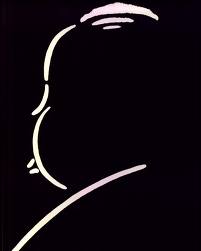Hitchcock 2012 U.S. (98 minutes) directed by Sacha
Gervasi; written by John J. McLaughlin, based on Stephen Rebello’s Alfred
Hitchcock and the Making of Psycho (Dembner Books, New York, 1990).
There must be countless ways a
Hollywood movie about a larger-than-life character like legendary director
Alfred Hitchcock making one of his classic films could go horribly wrong.
Director Sacha Gervasi and writer John
J. McLaughlin’s Hitchcock
manages to sidestep them all with flair and good taste, a dash of the legend’s
mordant wit as well as his meticulous eye for detail and crisply edited
storytelling manner.
Hitchcock provides an
imaginative profile of Hitchcock’s marriage and professional partnership with
his wife Alma Reville based on the period during which he was making Psycho,
one of his most fully realized artistic masterpieces and his most financially
successful film.
Psycho (1960) is the story of mother-haunted serial murderer Norman
Bates. Bates’ activities come to light after he murders Marion Crane, who
disappears after she steals $40,000 from one of her employer’s clients.
Marion’s sister Lila Crane and Marion’s boyfriend Sam Loomis hire private
detective Milton Arbogast to find her. Arbogast tracks Marion to Norman Bates’
motel where he also disappears. Lila and Sam pick up his trail from there.
The original story, by genre writer
Robert Bloch, is based on the Plainfield, Wisconsin serial murderer Ed Gein
(whose ‘spirit’ appears to Hitchcock in Gervasi’s movie, played by Michael
Wincott). Gein apparently was the model also for the serial killer Jame
‘Buffalo Bill’ Gumb in The Silence of the Lambs (1991).
Hitchcock took this noirish horror
genre story and shot it in uncompromising black and white; he made its aberrant
sexuality titillating by making his audience complicit voyeurs. He put this
revolutionary shocker together with Bernard Herrmann’s classic musical score in
such a way that the worst horror and violence, most notably the famous ‘shower
scene’ in which Bates’ ‘mother’ savagely stabs the naked Marion to death, takes
place in the viewer’s imagination.
The director personally financed
the project when appalled Paramount studio head Barney Balaban refused, and
then he fought with Geoffrey Shurlock, administrator of the Motion Picture
Production Code, the Hollywood self-censorship board, to clear the finished
film for release.
What a daunting challenge this biopic
must have presented for an actor! Just being Alfred Hitchcock was a full-time
job. Apart from his status as one of cinemas great auteurs, his larger than
life-sized personality and all the shopworn anecdotes and pop psychoanalyzing,
his instantly recognizable image and profile made this a hard-sell for us going
in.
But we were pleasantly surprised. Unlike
his campy Richard Nixon for Oliver Stone, Anthony Hopkins had us hooked once we
got past quibbles that he does not resemble the Master and tuned into the story
about a famous and successful artist hemmed in by advancing age and poor health
and others’ professional expectations of him, and about his wife, a gifted and formidable
behind-the-scenes presence. Pairing Hopkins's Alfred with Helen Mirren’s Alma was a
stroke of inspiration.
 |
| Helen Mirren as Alma Reville and Anthony Hopkins as Alfred Hitchcock editing Psycho in Hitchcock. |
In addition to the making of Psycho,
we see the portrait of a marriage of a couple who has been working together
professionally since the mid-1920s. Gervasi and McLaughlin give Alma the full
credit Hitchcock never failed to give her but that the public seldom saw. They
also show the controlling Hitchcock’s jealous resentment of Alma working
independently to help fictional screenwriter Whitfield Cook (Danny Huston) develop
a marketable script.
One wonders how the ‘controlling
Hitchcock’ himself would have made such a story convincing. How about hiring
two senior stars of great ability and charisma and encouraging the second lead
to steal the picture from the first?
Gervasi and McLaughlin frame their
story within the format of the popular Alfred Hitchcock Hour television
series which was current during the making of Psycho. These delicious,
hour-long tales of the macabre opened by pairing a taste of the drama to follow
with one of Hitchcock’s ironical comments and closed in a similarly amusing, irreverent
vein. In this instance, at the end, a raven lands on Hitchcock’s shoulder
foreshadowing his next project, The Birds.
In a sense, what Gervasi and
McLaughlin have accomplished is a kind of narrative jujitsu, by taking
Rebello’s factual potboiler, Hitchcock-style, and practicing their company’s
technical and artistic strengths to show Hitchcock and his company at work
rather than to try to ‘give’ us Hitchcock. The rest of their casting is of the
same order as the two leads.
In Psycho, Janet Leigh
played Marion Crane, with Vera Miles as her sister Lila and John Gavin as
Loomis. Anthony Perkins was Norman Bates.
 |
| Janet Leigh, inset, and Scarlett Johansson as Leigh playing Marion Crane in Hitchcock. |
Scarlett Johansson makes a terrific
Leigh and Jessica Biel makes as good a Miles because what we see is Hollywood
professionals working as Hollywood professionals, rather than trying to be ‘personalities’
(e.g., Marilyn Monroe, Elizabeth Taylor). James D’Arcy’s Tony Perkins looks and
feels startlingly close to the original.
We also see Hitchcock’s team: his
MCA (Music Corporation of America) agent Lew
Wasserman (Michael Stuhlberg); Peggy Robertson (Toni Collette), his production
assistant and gatekeeper; Joseph Stefano, the screenwriter of Psycho (Ralph
Macchio); assistant director Hilton Green (Kai Lennox), Saul Bass, Hitchcock’s
graphic designer and storyboard artist (Wallace Langham), Bernard Herrmann (Paul
Schackman), and film editor George Tomasini (Spencer Garrett), among
many others.
Not least can one imagine Hitchcock
and Alma approving Gervasi’s production design and sets (Judy
Becker, production designer; Robert Gould, set decorator; and art
director Alexander
Wei), camerawork (Jeff Cronenweth), and editing (Pamela
Martin). The costumes (designed by Julie
Weiss), particularly the women’s suits, outfits and lingerie are
sublime.
We found this to be a fully
satisfying and entertaining hour-and-a-half in the dark with strangers.


No comments:
Post a Comment